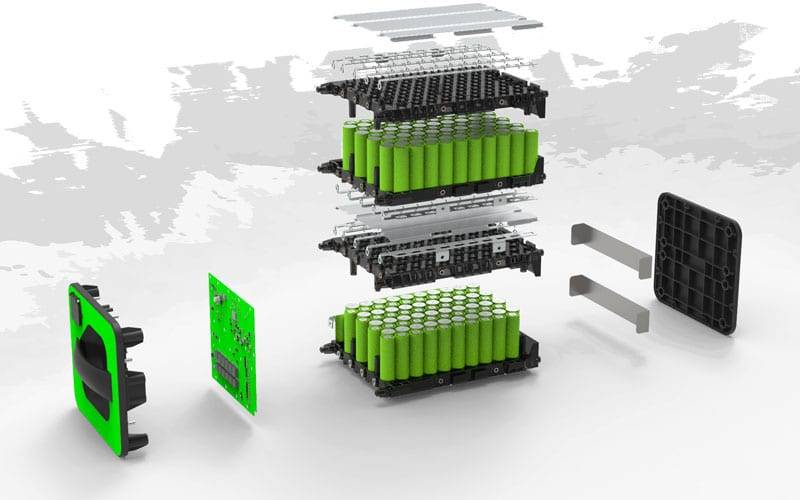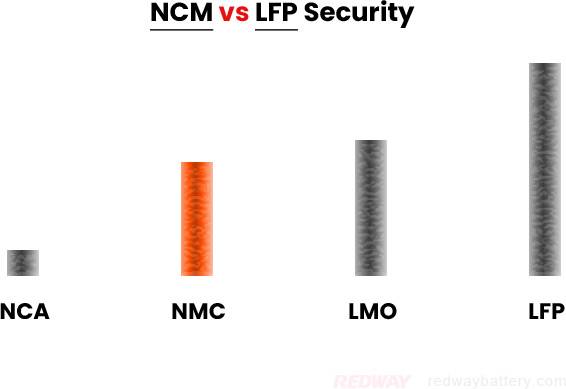Step into the world of lithium batteries! Today, we’ll focus on ternary lithium batteries—compact powerhouses that have transformed energy storage. Explore their composition, advantages, and applications in a simplified journey. Whether you’re a tech enthusiast or just curious, join us in unraveling the science and innovation behind ternary lithium batteries!
Understanding Lithium Batteries
Lithium batteries have become ubiquitous, powering devices from smartphones to electric vehicles, owing to their unique chemistry. Their standout features lie in the movement of lithium ions between electrodes, ensuring a lightweight design, rechargeability, and impressive energy density.
Key Advantages of Lithium Batteries:
- Lightweight Design:
- Lithium batteries, leveraging lithium as a primary element, are notably lighter than alternatives, making them ideal for portable devices where weight is crucial.
- Rechargeability:
- Unlike disposable batteries, lithium batteries can be recharged hundreds or thousands of times without significant performance decline, offering cost savings and environmental benefits.
- Impressive Self-Discharge Rate:
- Lithium batteries exhibit a remarkable self-discharge rate, retaining their charge for extended periods when stored correctly, ensuring devices remain powered even after months of inactivity.
- Enhanced Safety:
- Modern lithium battery technology has advanced safety features, significantly reducing the risk of overheating or combustion incidents that were more common in earlier versions.
Understanding the fundamentals of lithium batteries sets the stage for exploring specific types, such as the intriguing ternary lithium batteries.
Introduction to Ternary Lithium Batteries
Lithium batteries have transformed portable electronics, and among them, ternary lithium batteries stand out. Also known as nickel-manganese-cobalt (NMC) batteries, they bring a unique combination of metals—nickel, manganese, and cobalt—to enhance performance, offering improved energy density and stability.

Key Features of Ternary Lithium Batteries:
- Composition and Structure:
- Ternary lithium batteries feature a cathode composed of layered oxides with varying proportions of nickel, manganese, and cobalt. This composition ensures high capacity retention over numerous charge-discharge cycles.
- High Energy Density:
- Ternary lithium batteries excel in energy density compared to alternatives like lithium iron phosphate (LiFePO4) or lithium-ion (Li-ion) batteries. This allows them to store more energy in a compact size.
- Applications and Performance:
- Widely used in electric vehicles, renewable energy storage, and consumer electronics, ternary lithium batteries offer superior power capabilities. They outperform LiFePO4 or Li-ion batteries in specific capacity output and cycle life span.
- Challenges and Ongoing Research:
- Challenges include higher costs due to cobalt materials and safety concerns related to flammable solvents. Ongoing research aims to optimize compositions and explore new electrode designs for enhanced energy storage capabilities.
In conclusion, ternary lithium batteries represent a significant advancement in battery technology, providing efficient and powerful solutions for diverse applications.
Composition and Structure of Ternary Lithium Batteries
Ternary lithium batteries, also called lithium-ion manganese nickel batteries, have become popular for their rechargeable capabilities. These batteries consist of three key components: an anode, a cathode, and an electrolyte.
Composition and Structure:
- Anode and Cathode:
- The anode, typically made from graphite, serves as the source of lithium ions during charging. The cathode is composed of a ternary material containing elements like nickel, cobalt, and manganese, enhancing energy density and stability.
- Electrolyte:
- Ternary lithium batteries use a liquid electrolyte, a mixture of organic solvents and lithium salts. The electrolyte facilitates ion transfer between the anode and cathode, ensuring a conductive medium while preventing unwanted reactions.
- Structural Features:
- Ternary lithium batteries often adopt a layered structure with multiple layers stacked together. These layers consist of alternating positive (cathodes) and negative (anodes) electrodes, separated by porous separators soaked with electrolytes. This design enhances ion transport efficiency and prevents issues like short circuits or thermal runaway events.
Understanding the composition and structure of ternary lithium batteries sheds light on their performance attributes, distinguishing them from other battery types available in the market.
Advantages and Disadvantages of Ternary Lithium Batteries
Ternary lithium batteries, also known as lithium-ion manganese nickel batteries, come with distinct advantages and disadvantages that influence their applications. Understanding these factors is crucial for informed decision-making.
Advantages:
- High Energy Density:
- Ternary lithium batteries provide superior energy density, ensuring longer-lasting power for devices like smartphones and laptops.
- Improved Safety:
- Enhanced safety features, including advanced control systems, reduce the risk of thermal runaway or explosions, ensuring secure operation even in extreme conditions.
- Fast Charging Capability:
- These batteries offer fast-charging capabilities, allowing users to enjoy shorter charging times and rapid device reusability.
Disadvantages:
- Cost:
- Ternary lithium batteries are often more expensive due to their complex composition and manufacturing processes, potentially limiting their adoption in cost-sensitive applications.
- Limited Lifespan:
- Despite technological advancements, these batteries still have a finite lifespan, with gradual capacity reduction over time, impacting overall performance.
- Temperature Sensitivity:
- Extreme temperatures, whether hot or cold, can adversely affect the performance and longevity of ternary lithium batteries, necessitating careful consideration in diverse environments.
Considering these pros and cons is essential for determining the suitability of ternary lithium batteries for specific projects or applications.
Applications of Ternary Lithium Batteries
Ternary lithium batteries, renowned for their distinctive design, have found widespread applications across diverse industries, showcasing their versatility and performance.
Applications:
- Electric Vehicles (EVs):
- Ternary lithium batteries excel in powering electric vehicles, providing high energy density and thermal stability. This results in extended driving ranges and faster charging, contributing to the growth of the EV market.
- Portable Electronic Devices:
- In smartphones and laptops, ternary lithium batteries are increasingly preferred due to their higher capacity. This ensures prolonged battery life and enhanced performance for various portable electronic applications.
- Drones and UAVs:
- The exceptional power-to-weight ratio of ternary lithium batteries makes them ideal for drones and unmanned aerial vehicles. Their lightweight design enables longer flight times without compromising power output.
- Energy Storage Systems (ESS):
- Ternary lithium batteries are extensively used in residential and commercial energy storage systems. Their efficiency in storing significant amounts of energy makes them a reliable choice for storing renewable energy from sources like solar panels and wind turbines.
- Medical Devices:
- Compact size and long-lasting power make ternary lithium batteries suitable for medical devices such as pacemakers and implantable defibrillators, ensuring reliable and sustained performance.
Understanding these applications highlights the broad impact and significance of ternary lithium batteries across various technological domains.
Comparison with Other Types of Batteries
In the realm of batteries, diversity reigns, with each type offering distinct pros and cons. Ternary lithium batteries, a standout in this landscape, bring unique advantages compared to other battery types.
Comparison Highlights:
- Lead-Acid Batteries:
- Ternary lithium batteries outshine traditional lead-acid batteries with higher energy density and an extended lifespan. This translates to superior energy storage in a lighter, more compact package, coupled with a lower self-discharge rate for long-term reliability.
- Nickel-Cadmium (NiCd) and Nickel-Metal Hydride (NiMH) Batteries:
- Compared to NiCd and NiMH batteries, ternary lithium batteries boast a higher specific power output, making them adept at delivering electricity rapidly. This feature is particularly advantageous in high-performance applications like electric vehicles and power tools.
- Lithium Iron Phosphate (LiFePO4) Batteries:
- Against LiFePO4 batteries, ternary lithium batteries exhibit higher capacity retention over multiple charge-discharge cycles. This signifies their ability to maintain effective charge-holding capacity, contributing to prolonged performance.
Conclusion: While recognizing that every battery type serves specific purposes, the exceptional characteristics of ternary lithium batteries position them favorably across industries, including automotive, electronics, and renewable energy storage.
Future Developments in Ternary Lithium Battery Technology
The future of ternary lithium battery technology promises exciting developments, aiming to enhance performance, safety, sustainability, and integration with renewable energy systems.
Future Developments:
- Increased Energy Density:
- Researchers are focused on elevating the energy density of ternary lithium batteries, aiming to boost their capacity for storing energy, ultimately extending their lifespan.
- Fast Charging Capabilities:
- The future envisions quicker charging times for ternary lithium batteries without compromising safety or longevity, offering a more efficient and convenient user experience.
- Enhanced Safety Features:
- Ongoing efforts aim to further fortify the safety mechanisms of ternary lithium batteries, minimizing risks associated with thermal runaway and ensuring a secure user environment.
- Sustainable Materials:
- Embracing eco-friendly practices, researchers seek to incorporate sustainable materials into ternary lithium batteries, aligning with the growing demand for environmentally conscious energy solutions.
- Integration with Renewable Energy Systems:
- Ternary lithium batteries are poised to play a pivotal role in renewable energy systems, facilitating efficient storage and utilization of solar and wind power on a larger scale.
- Advanced Manufacturing Techniques:
- Future advancements include the development of sophisticated manufacturing techniques to make ternary lithium batteries more cost-effective and accessible without compromising quality standards.
In conclusion, the future landscape of ternary lithium battery technology holds promising strides towards addressing energy storage needs while embracing sustainability and efficiency in an environmentally conscious era.
Related Posts
- Zapping the Voltage: A Simple Guide to Multimeter Testing for AAA Battery Voltage
- Will solid-state batteries replace lithium?
- Will Batteries Last Longer in the Freezer? Answers to Your Freezing Battery Myths!
- Will batteries last longer in the freezer?
- Why you shouldn’t charge your phone overnight?
- Why would someone put batteries in the freezer?





























